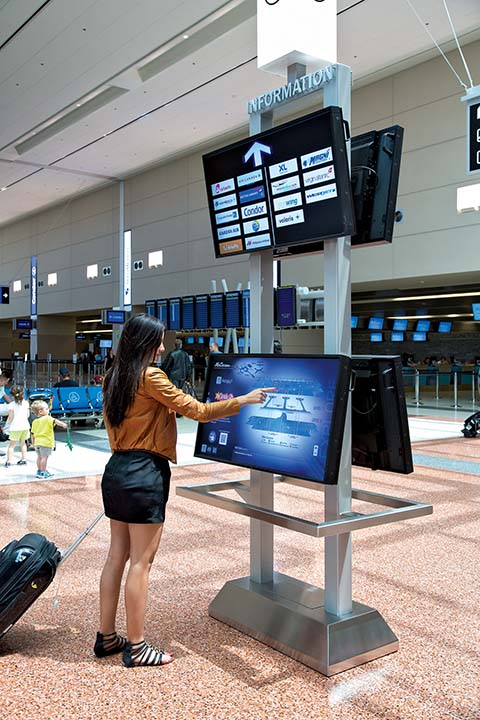By Keith Yanke
The global market for digital signage is expected to be worth nearly $4.5 billion U.S. in 2016. At the same time, information technology (IT) spending in the transportation sector has been increasing each year. These two trends are not mutually exclusive; indeed, when one is travelling, there seems to be digital signage everywhere, from screens in taxis and buses to flight information display systems (FIDSs) displaying arrival and departure times in airports’ waiting areas, though there are also many spaces yet untouched.
The transportation sector—spanning airports, train stations, bus depots and other facilities—has specific needs with respect to digital messaging. Officials must carefully consider software, displays, media players, mounting systems and content, among other factors.
Built to last
Professional, commercial-grade displays are essential in transportation environments, as they tend to be operated for 20 to 24 hours a day—it is very rare for them to be turned off—and for years on end. Ultimately, the length of use will depend on the specific property and its management; some clients fully refresh their displays after only a few years, but five years is generally the minimum period before screens are replaced.
The commercial grade of a digital display begins with its mechanical design, including a heavy-duty internal and external metal chassis, with protection against environmental conditions in mind. Airflow is also important to ensure continuous operation—consumer-grade TVs, by comparison, offer none.
Also, digital signage displays are not just used indoors. There is increasing demand to reach travellers and visitors with information and advertising before they step into a transportation facility. The growing frequency of outdoor and semi-outdoor screen installations means there are more variables to address in terms of durability when choosing the right systems.
Some screens are protected by integrating them into outdoor enclosures, which are usually custom designs, but share features like air conditioning to protect the internal electronics against heat and humidity. Another option is to integrate a screen into a kiosk, which offers its own ingress protection (IP) against liquid and solid particles for digital signage applications in outdoor or semi-outdoor locations. Some displays are themselves outdoor-rated, with no need for an additional enclosure.
Another factor is brightness. Many transportation facilities are designed to let in plenty of natural light, which can make for a challenging ambient environment for viewing digital displays unless they are high-brightness (HB) models.
Vandalism it not typically a problem in airports and transit stations, but some display enclosures are ballistic- and vandal-resistant. They may come with outer layers of film that, if spraypainted with graffiti, can simply be removed and replaced.
Given how busy transportation facilities can be at all hours, remote control and monitoring of the screens must be supported. It is also preferable to push out all on-screen content from one location within the facility, so there is no inconsistency.






